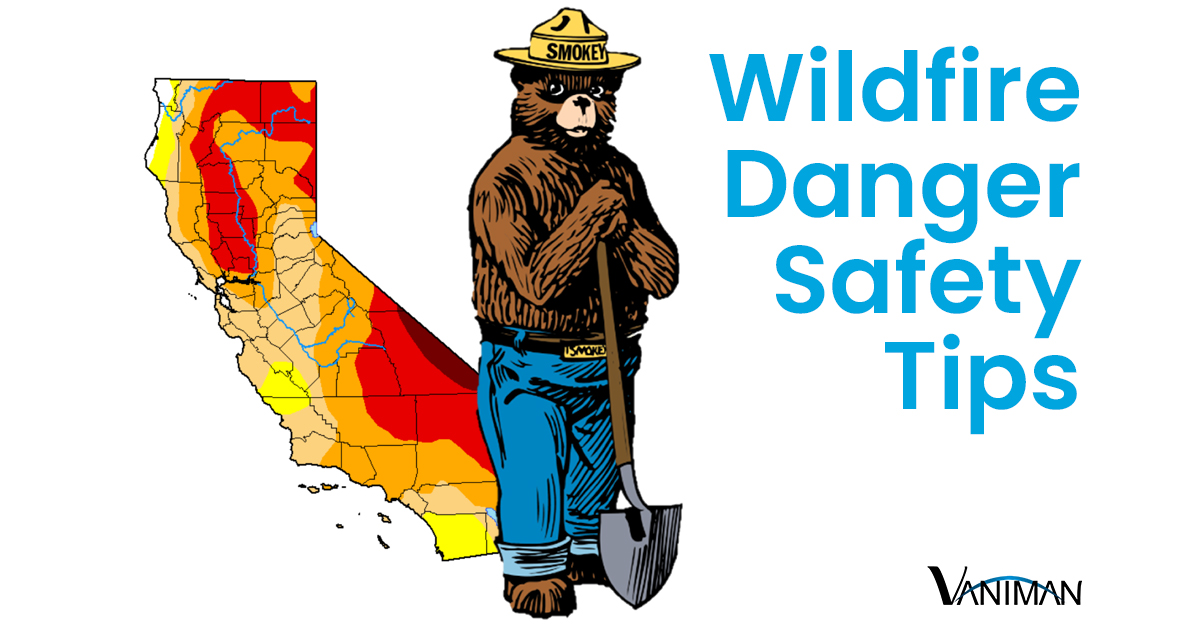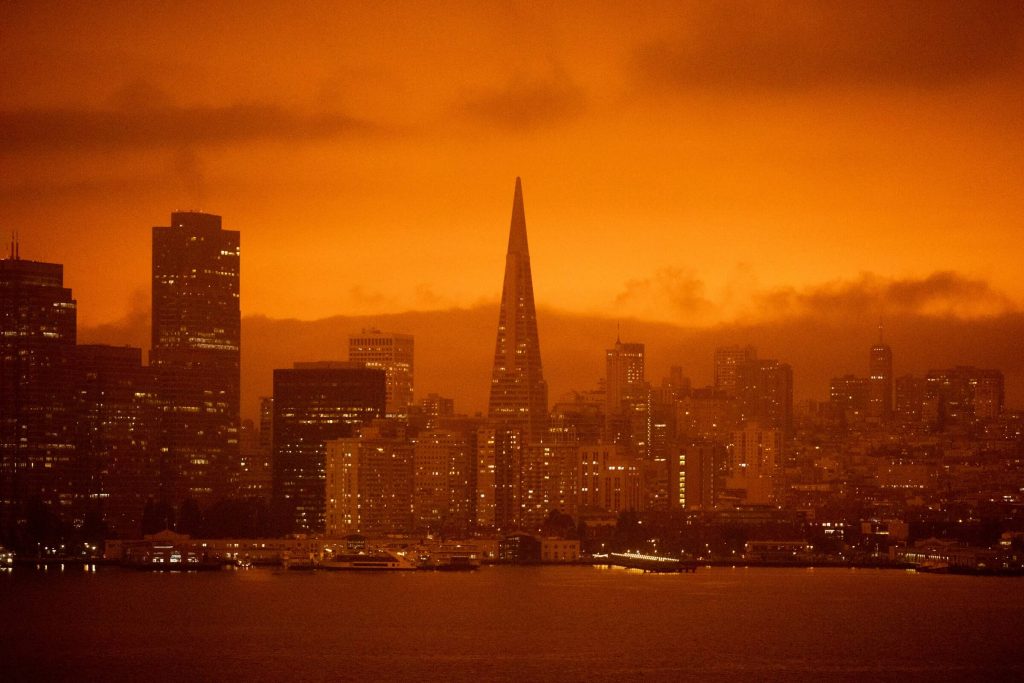
The Governor of California has declared a State of Emergency due to drought conditions in the Russian River Watershed and elsewhere. (California Governor Gavin Newsom: State of Emergency Proclamation, April 21, 2021)
The declaration is good, in that it opens up resource sharing and cross-county-line cooperation to address the issue. But it’s also bad, in that it foretells bad news.
This is the latest sign that Californians are in for a rough year, climate-wise. There are already many reports of the dry winter foreboding a yearlong drought. Much of California is already suffering severe drought conditions due to low rainfall and snowpack. We were hoping for a “March Miracle” when we got a little rain and some unexpected hail, but it wasn’t enough to stave off overall drought conditions. (WeatherWest: The Ridiculously Resilient Ridge returns…again)
The NOAA has determined the La Niña conditions that brought the dry winter have persisted and will continue through spring. (NOAA – ENSO: Recent Evolution, Current Status and Predictions)
This extended dryness has implications far and wide, from farmers’ ability to grow crops to inner cities considering water rationing measures. It will also no doubt carry grave environmental impacts for flora and fauna of all sizes.
But most Californians hear “drought” or “dryness” and we think of one thing…
…Wildfires.

We’ve been talking a lot about air quality over the past year, so of course it’s top of mind as a health concern when the topic of wildfires comes up. Our state has been ravaged by record-breaking fires every year for several years in a row now.
But California doesn’t have a monopoly on wildfires; they can occur anywhere, and have been doing so all over the western United States and Canada, and all the way down in Australia, too. It’s an issue any time there are drought conditions anywhere.
We need to be aware at all times of what to do to prevent them, what to do when they occur, and what to do if a wildfire goes through or nearby your area.
Safety tips for preventing wildfires
- Keep cars, heavy machinery, gasoline, and other flammable containers or objects off of grass and away from vegetation.
- Be sure you have masks available. We’ve all been living with masks for some time thanks to the COVID-19 pandemic, so this should be simple. Of course, cloth masks are better than nothing, but respirator surgical masks like N95 or KN95 masks are best to have on hand for use during a wildfire.
- Never leave any fire unattended, be it a campfire, trash container fire, or indoor fireplace fire. Always maintain control, and keep fires small and manageable.
- Smokers, please put butts and used matches into closed non-flammable containers, preferably with water inside.
- Avoid fireworks. We know they are fun, but wildfires are not. Just don’t play with fireworks where there are drought conditions, period.
- Avoid anything that burns, sparks, or creates any sort of flame on windy days.
- See more wildfire prevention tips from the Red Cross. (Red Cross: How to Stop Fires from Starting)
Safety tips during a wildfire
- Listen to local area radio, NOAA radio or local TV stations for the latest wildfire information. If there are online resources specific to your area that maintain updates in real-time, you can check those as well. (Avoid adding to hashtag topics on social media unless you have safety information to spread; otherwise you can clutter up what may be a valuable resource to the safety of others.)
- Be prepared to evacuate at the drop of a hat. As soon as you hear an evacuation notice, you should follow the order. (That means you should be prepared well in advance!)
- Double check your emergency supplies and replenish any missing or depleted items – especially medications and medical supplies.
- Do your best to avoid smoke; however you can remove it from a room, do consider it. Wear a mask when you start to smell smoke or begin to cough; masks are not a perfect solution, but they can certainly help.
- Read more from the Red Cross – and read them now, don’t wait until a wildfire sparks nearby! (Red Cross: Top Tips for Wildfire Safety)
Safety tips after a wildfire
- If you evacuated during the fire, please do not return until officials declare it safe to do so.
- Avoid hotspots – even after a fire is extinguished, small fires can flare up more easily than normal.
- Avoid releasing water too quickly on hills, as dried and burned soil may degrade and slide more easily after a fire. If a rainstorm is predicted, avoid hillsides entirely. (Evacuate again to safer ground if necessary.)
- Take additional steps to reduce your exposure to smoke inhalation. Smoke lingers in the air for days after a wildfire roars past. Smoke is more harmful to our lungs than we may think, and can have long lasting effects, especially for children.
- Use portable air purifiers to help clear the air of smoke and other particulates.
- Make sure to check all your filters in all your systems regularly for weeks and months following a major smoke event.
VANIMAN PRODUCT FILTER INFORMATION - See more post-wildfire safety tips from the CDC. (CDC: Stay Safe After a Wildfire)
Portable in-room air purifiers are a great way to stop the spread of COVID-19 via biological aerosols. They are also handy for cleaning the air of smoke after a wildfire comes near your area.
Smoke from broad fires launches harmful particles and hydrocarbons in thick densities, and wind carries them far and wide — much farther than the fire itself spreads. A fire that comes even within a couple miles of an area can leave smoke damage in the community. Furthermore, it contributes significantly to the overall fine-particle pollution in the region.
We’ve been helping school districts get the Vaniman Pure Breeze HEPA Air Purifier into classrooms; federal funds have been allocated to help stop COVID-19 for these kinds of things, and the timing works well to help schools prep for a lengthy drought and extended wildfire danger in California and the western U.S.
The filtration system in the Pure Breeze includes a charcoal filter that traps odors, vapors, and fumes in addition to the particle and HEPA filters inside. And with easy access to replace filters as needed, the Pure Breeze is a perfect fit for public schools.
Read more about the Vaniman Pure Breeze HEPA Air Purifier here.
There’s no time like the present to ramp up air quality safety. Contact Vaniman today about our Pure Breeze HEPA Air Purifier!
Sources
California Governor Gavin Newsom: State of Emergency Proclamation, April 21, 2021 – https://www.gov.ca.gov/wp-content/uploads/2021/04/4.21.21-Drought-Proclamation.pdf
WeatherWest: The Ridiculously Resilient Ridge returns…again – https://weatherwest.com/archives/8692
NOAA – ENSO: Recent Evolution, Current Status and Predictions – https://www.cpc.ncep.noaa.gov/products/analysis_monitoring/lanina/enso_evolution-status-fcsts-web.pdf
Red Cross: How to Stop Fires from Starting – https://www.redcross.org/get-help/how-to-prepare-for-emergencies/types-of-emergencies/wildfire/how-to-prevent-wildfires.html
Red Cross: Top Tips for Wildfire Safety – https://www.redcross.org/get-help/how-to-prepare-for-emergencies/types-of-emergencies/wildfire.html
CDC: Stay Safe After a Wildfire – https://www.cdc.gov/disasters/wildfires/afterfire.html
Los Angeles Times – Wildfire Smoke Leads to Fine-Particle Pollution in Western U.S. – https://www.latimes.com/california/story/2021-01-13/wildfire-smoke-fine-particle-pollution-western-us-study
